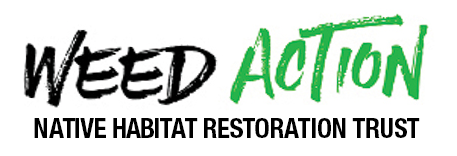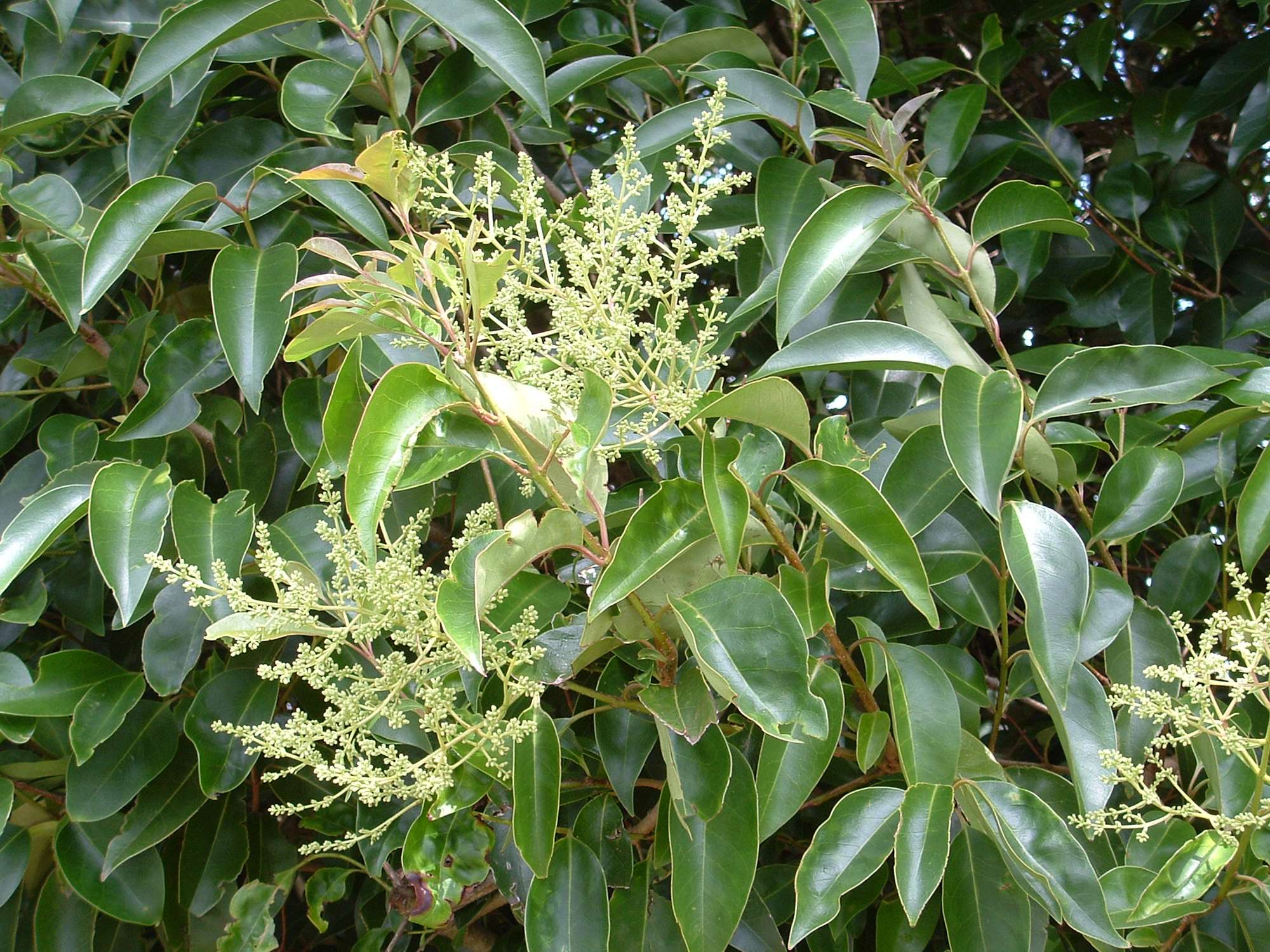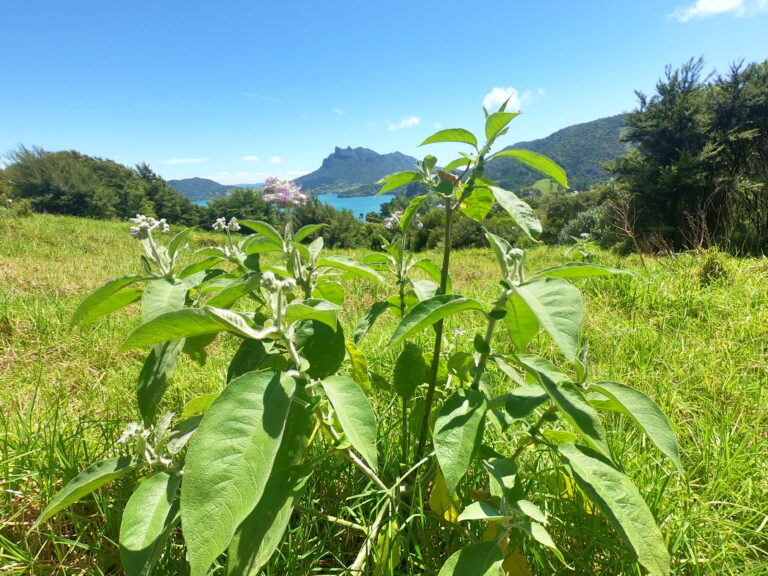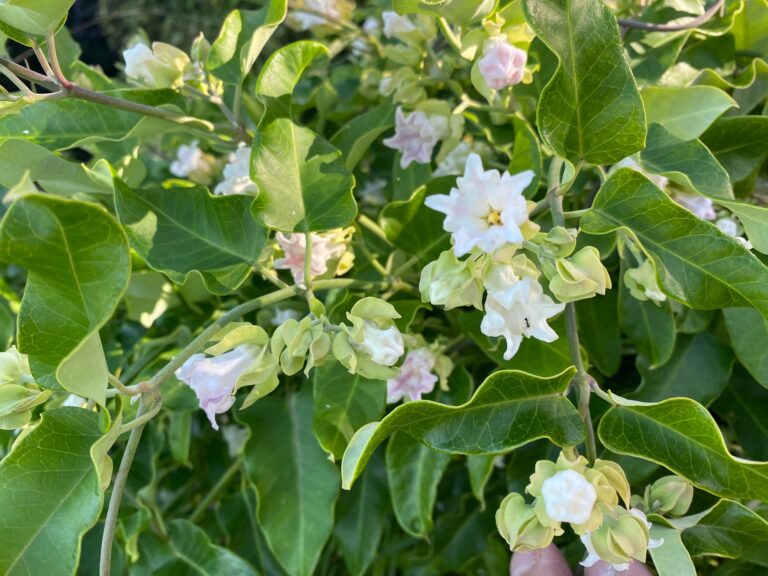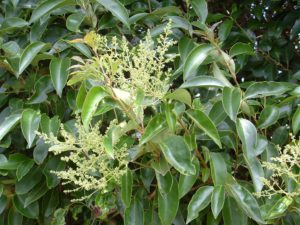 Ligustrum lucidum
Ligustrum lucidum
Just want to know how to kill it?
Skip to control methods
Also known as
Japanese privet, broadleaf privet
What does it look like?
A small to large evergreen tree that can grow up to 15m high, but can also be a dense shrub less than 10m. Can have distinctive warty lumps on stems. Dark green oval leaves (5-13 x 3-6 cm) glossy on upper surface, with pointed tips and smooth edges. Arranged in opposite pairs on the stems.
Produces long panicles or clusters of tiny cream-coloured, strongly scented flowers, from November to March, followed by bluish or purplish-black berry-like fruit (6 x 5 mm), coated with a powdery ‘bloom’.
Why is it a problem?
Fast-growing and very long lived (100+ years), with prolific, widely dispersed seed. Seedlings tolerant of both sun and shade means that it can invade both marginal land and intact forest. It replaces mid canopy trees (grows to the same height as species such as taraire, towai, pohutukawa) and completely dominates areas of forest if unhindered, forming very dense, tall stands. Leaves & fruit poisonous, pollen and perfume contributes to allergies and asthma.
Wide environmental tolerance; very tolerant of shade, frost, damage, grazing, all well-drained soil types, high to moderate temperatures, damp or drought conditions, salt and wind.
Threatens coastal and lowland forest types (intact and disturbed), shrublands, fernland, cliffs, and coastlines.
How does it spread?
Seed dispersed by birds, over long distances by Kereru. Vegetation dumping and soil movement also spreads seeds.
How much of it do we have on the Whangarei Heads Peninsula?
The core of the infestation at Solomon’s point and further north. South and east of this the infestations begin to reduce in frequency and density, to a point where there are only scattered individual trees and saplings, which occur less and less frequently.
What can we DO about it at Whangarei Heads?
Heaps! Privet is easy to kill with metsulfuron and if we approach it as a community, seeking out and removing the outliers and pushing back the boundaries of the worst infestations we can protect the rest of the peninsula from becoming what will otherwise be privet forest.
It is easiest to spot in peak flowering Jan-March so get in touch to get some advice and equipment to be ready and on the look out this summer.
Check out the control methods below:
How do I control it?
- Hand control: Pull out seedlings and small plants. Leave to rot on site
- Cut stump application: Cut within 2 cm of ground level and immediately treat stump with Trichloram at 200mls/L water or Weed Action’s Gly/ Met Mix. Cut stems can be left on site to rot down. .
- Drill & fill: Drill using 12-13mm auger bit sloping holes into the sapwood at 10 cm intervals around the base of the trunk and any exposed roots. & immediately fill each hole with Weed Action’s Gly/ Met Mix
- Frill and Fill: Make deep downward cuts into the sapwood around the base of the tree, taking care not to ring bark the plant, and immediately saturate the cuts with trichloram at 200mls/ L water.
- Spray seedlings with trichloram at 6mls/L of water + penetrant, best in spring and summer. Special notes: Follow up 6-12 monthly to keep on top of seedbank and to treat any resprouting trees. Bared areas reseed profusely.
Management: Follow up 6-12 monthly to keep on top of seedbank and to retreat any resprouting trees. Easiest to spot during spring flowering. Bared areas reseed profusely. If removing large adult trees and opening up an area to light, be prepared to treat the resulting seedlings that will germinate to prevent creating a thicket of saplings which are more labour intensive to control.
CAUTION: when using any herbicide or pesticide PLEASE READ THE LABEL THOROUGHLY to ensure that all instructions and safety requirements are followed.
Click here for more information on the herbicides referenced in the control methods, or here for more information on the suggested techniques.
Photos of Tree Privet
Save
